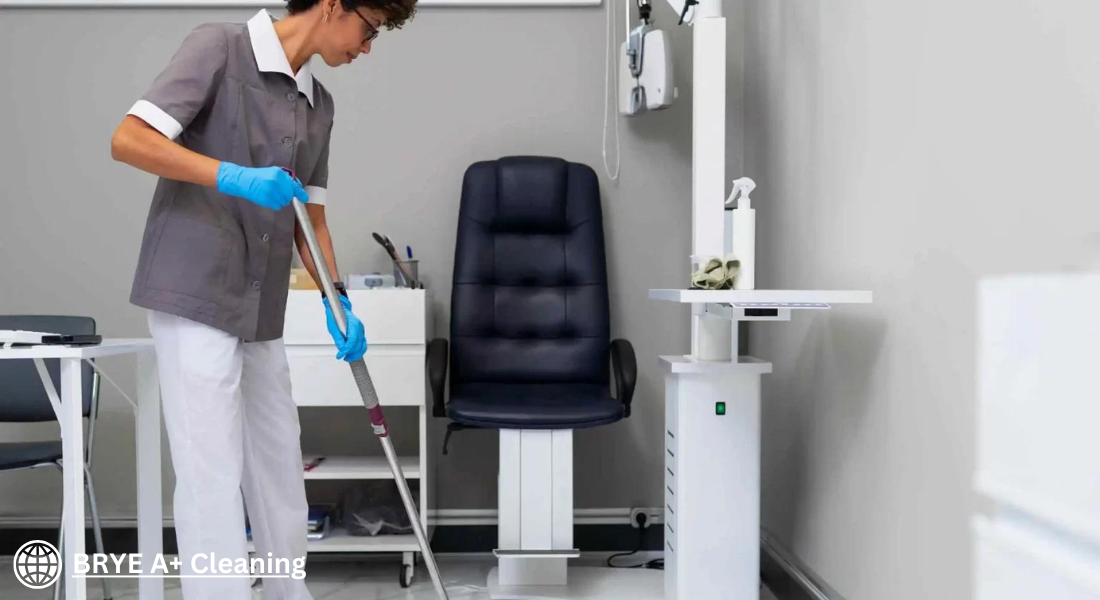Introduction:
FPHL, also referred to as female pattern baldness, is hair loss in women that can be caused by several factors such heredity, hormonal changes in the body or as a result of medical conditions and health habits. Male pattern baldness on the other hand rarely affects females as they experience the kind of thin hair that is evenly spread among the crown of the scalp and other specific parts of the top of the head. Strain, nutritional deficiencies, or conditions linked to hormonal changes like pregnancy or thyroid issues also make hair fall more. Examples of treatments are the topical use of minoxidil and the intake of spironolactone and certain lifestyle changes to address the root causes. Treatment in the initial stages can prevent symptoms and enhance outcomes.
Hair growth cycles and types of hair loss in women:
Hair growth in women, as in men, occurs in a cyclical pattern consisting of three main phases:

1. Anagen (Growth Phase):
This is the growth phase where the growth is achieved through the active accumulation of the biomass between the period of two and seven years. Here the follicles are very active and are producing new hair cells hence the growth of hair is increased. About 85-90% of the hair at any given moment of time lies within the scalp in the anagen phase.
2. Catagen (Transitional Phase):
This phase is quite short and lasts about 2 -3 weeks. Proliferation of the hair follicles ceases and they begin to atrophy. This phase is the final one yet quite active of hair strand growth.
3. Telogen (Resting Phase):
This phase lasts about 3 months and is the period when the hair rests before it starts to shed after breaking off from the follicles. After this the follicle once more enters the anagen phase thus regenerating hair. When the telogen phase reaches about 10-15% of the hair in the scalp then it means that the hair is now growing.
Types of Hair Loss in Women:
1. Female Pattern Hair Loss (FPHL):
Also known as androgenetic alopecia, this is the most common type of hair loss in women. It typically manifests as diffuse thinning over the crown and top of the scalp while maintaining the frontal hairline.
2. Telogen Effluvium:
This condition is characterized by widespread hair shedding due to a disturbance in the hair growth cycle. Factors such as stress, illness, surgery, or nutritional deficiencies can trigger more hair follicles to enter the telogen phase prematurely.
3. Alopecia Areata:
An autoimmune condition that results in sudden, patchy hair loss. The body’s immune system mistakenly attacks hair follicles, leading to smooth, round bald patches.
4. Traction Alopecia:
Caused by prolonged tension on the hair due to hairstyles such as tight ponytails, braids, or extensions. This type of hair loss can be prevented by avoiding hairstyles that put stress on the hair shafts.
5. Anagen Effluvium:
Rapid hair loss due to medical treatments like chemotherapy, which affect the anagen phase of hair growth. This type is usually temporary, with hair regrowing after the treatment ends.
Causes and Symptoms of Hair loss in Women:

Causes:
- Genetics: FPHL or androgenic alopecia, is most often hereditary and the most frequent reason for hair thinning and loss in women. It tends to be patchy with thinning mainly on the crown area of the scalp.
- Hormonal Changes: Changes caused by pregnancy, puerperium, climacteric period and some endocrine disorders (polycystic ovary syndrome) also contribute to disturbances in hair growth.
- Medical Conditions: Alopecia creates baldness by stimulating the immune system to damage the hair follicles. Stress, chronic diseases, scalp infections, and various dermatological disorders can all affect hair growth.
- Nutritional Deficiencies: Low intake of foods rich in essential nutrients such as iron, vitamin D, zinc, and biotin causes one to experience hair thinning and loss. The role of poor diet and eating disorders is the most important one.
- Medications: Some of the medications that are used to curb cancer, arthritis, depression, heart conditions, hypertension or high blood pressure and some other problems may also lead to hair loss. Chemotherapy causes rapid loss of hair in the development stage called anagen.
- Stress: Excess stress both physical and emotional can lead to telogen effluvium; a condition where large numbers of hair follicles shift to the phase of resting by shedding hair at a greater rate.
- Hairstyling Practices: Some of the common measures that can lead to hair loss include constant use of tight hairstyles such as ponytails, braids or extensions which could lead to traction alopecia. The hot brush and chemical products may also cause harm to hair causing breakage and even loss.
- Aging: The hair loss process varies dramatically with age as the natural hair growth cycle accelerates or declines. Shrinks in the size of hairs and lesser amounts of melanin in the hair lead to baldness.
Understanding the underlying cause of hair loss is crucial for effective treatment and management. Addressing the root cause, whether it’s medical, nutritional, or related to lifestyle, can help mitigate hair loss and promote regrowth.
Symptoms of hair loss in women:

The symptoms of hair loss in women can vary depending on the underlying cause, but some common signs include:
- Thinning on Top of the Head: FPHL is the most common type of hair loss seen in women, characterized by thinning of the hair found on the top part of the head and the top of the crown. The hair part may wither as it widens as time goes by.
- Patchy Bald Spots: Alopecia areata is an autoimmune disorder which causes hair loss in conditions of round, bald and smooth patches on the scalp or the body as a whole.
- Widespread Shedding: Waking up to find more hair on the brush or in the drains for example as a result of showering your hair is a common sign of telogen effluvium. The hair falls out in clumps.
- Receding Hairline: While many men could also face this, some women could also have a receding hairline, and this is especially so if she is always using a certain type of hairdo that tugs at her hairline.
- Thinning Ponytail: If you have been ponytailed for a while, you may notice that your ponytail is thinner than it usually is because of diffuse hair thinning.
- Scalp Pain or Itching: Inflammatory scalp conditions or infections can cause discomfort, leading to scratching and hair loss.
- Visible Scalp: Increasing visibility of the scalp through thinning hair can indicate progressing hair loss.
- Shorter Hair Growth Cycle: Hair may not grow as long as it used to before falling out, and new growth may be finer and more brittle.
Treatment of hair loss in females:
Treating hair loss in women involves addressing the underlying cause and promoting hair regrowth through various medical and non-medical approaches. Here are some common treatments:

I. Medical Treatments:
Topical Medications:
- Minoxidil: Minoxidil is one of the only FDA approved hair loss treatments for FPHL and its application is directly to the affected area with the intent to stimulate the hair follicles and hair regrowth. Over-the-counter product in 2% and 5% concentrations.
- Topical corticosteroids: These may be prescribed for certain types of hair loss, such as alopecia areata, to reduce inflammation and encourage hair regrowth.
Oral Medications:
- Spironolactone: The other anti-androgen drug can help control hair loss by inhibiting the hormone androgen, specifically its receptors, and thereby reducing the hormonal levels which cause hair loss.
- Finasteride: Based on the medical studies, this medication is mainly prescribed to men although some women can also benefit from the regular intake under the physician’s guidance as this medicine slows down the miniaturizing of the hair follicles.
- Hormonal Therapy: In the case of hair loss due to imbalances in hormones like PCOS or hair loss due to hormone imbalances seen in menopause oral contraceptives or medications that target the hormonal imbalances may be prescribed.
Surgical Procedures:
- Hair Transplant Surgery: For severe hair loss there are the surgical techniques – the strip technique with FUT and FUE. Here, the surgical procedures encompass the hair transplant process, which involves the transfer of the hair follicles of a donor area to the target areas where there is thinning and balding.
II. Non-Medical Treatments:

- Platelet-Rich Plasma (PRP) Therapy: PRP uses the patient’s blood to promote the growth of new hair. The procedure requires the withdrawal from the patient’s body of a small amount of blood, which is then processed to concentrate the platelet and that is injected into the scalp. Platelets have growth factors that are useful for the hair follicle and can encourage the regeneration of hair. PRP is regarded as safe and efficient with FPHL or alopecia areata patients.
- Low-Level Laser Therapy (LLLT): It utilizes the red light which is applied to stimulate the hair follicles and also aids in increasing the flow of blood into the scalp and encourages hair growth. Clinic as well as home use models come in the form of laser combs, helmets, or caps.
- Scalp Massage: Scalp massage is important as it assists in improving the supply of blood to hair follicles which facilitates growth of hair. There are some cases where massaging the scalp using light touch will help increase blood circulation as well as enhance the distribution of natural oils that are produced in the scalp which is essential for the hair and the scalp.
- Nutritional Supplements: There are several nutritional supplements that are found as vitamins, minerals and herbal supplements that support hair health and growth. There are other supplements, such as biotin,iron, zinc, and saw palmetto, that are regularly consumed to address their deficiencies and encourage hair growth. But the important thing here is that, it is highly recommended to seek the advice of a medical doctor before buying any such supplements.

- Aromatherapy: Peppermint, rosemary, and lavender essential oil are popular for their effectiveness in the promotion of beauty hair and healthy scalp. One can use any of these oils by simply mixing them in the carrier oils such as coconut oil or jojoba oil and then applying it to the scalp or directly adding it to shampoos or conditioners.
- Hair Care Practices: Those who may have experienced hair loss or damaged hair should adopt the gentle hair care practices which include the use of mild shampoos and conditioners, avoidance of harmful chemical interventions and minimal heat styling.
- Stress Management: Stress is often cited as a leading cause of increased hair loss; hence seeking help to reduce stress levels by adopting techniques such as meditation, yoga, deep breathing, or therapy can also be beneficial.
Conclusion:
Women who come in contact with hair loss to seek advice from their dermatologist or medical practitioner of choice to get the specific treatment method that can work in their case. It is therefore very important that the fundamental cause of hair loss be identified in order to be able to treat and manage this condition effectively. Those looking at the root cause – medical, nutrition and otherwise – of the hair loss might be able to reduce this loss as well as encourage regrowth. These natural remedies present women with additional and alternative methods for hair loss treatment that may work as primary or as complementing treatments to the medical treatments. These choices should be well communicated to a health caregiver to explore the best alternative that suits her desires.



